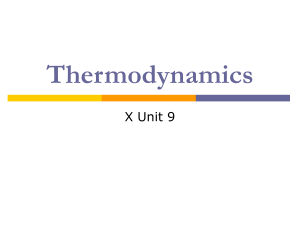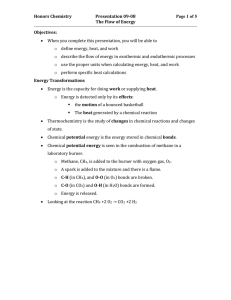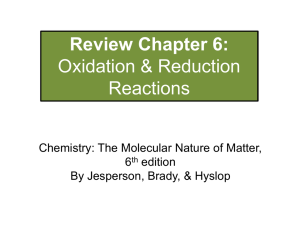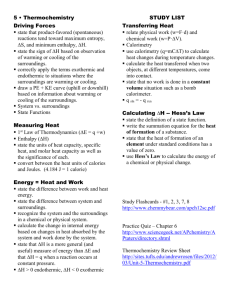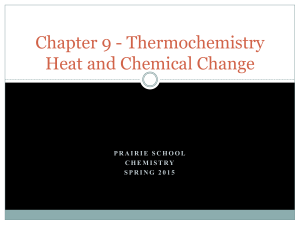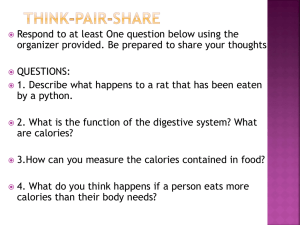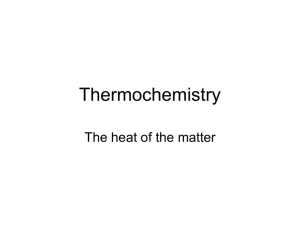Section 17-1, 17-2, 17
advertisement
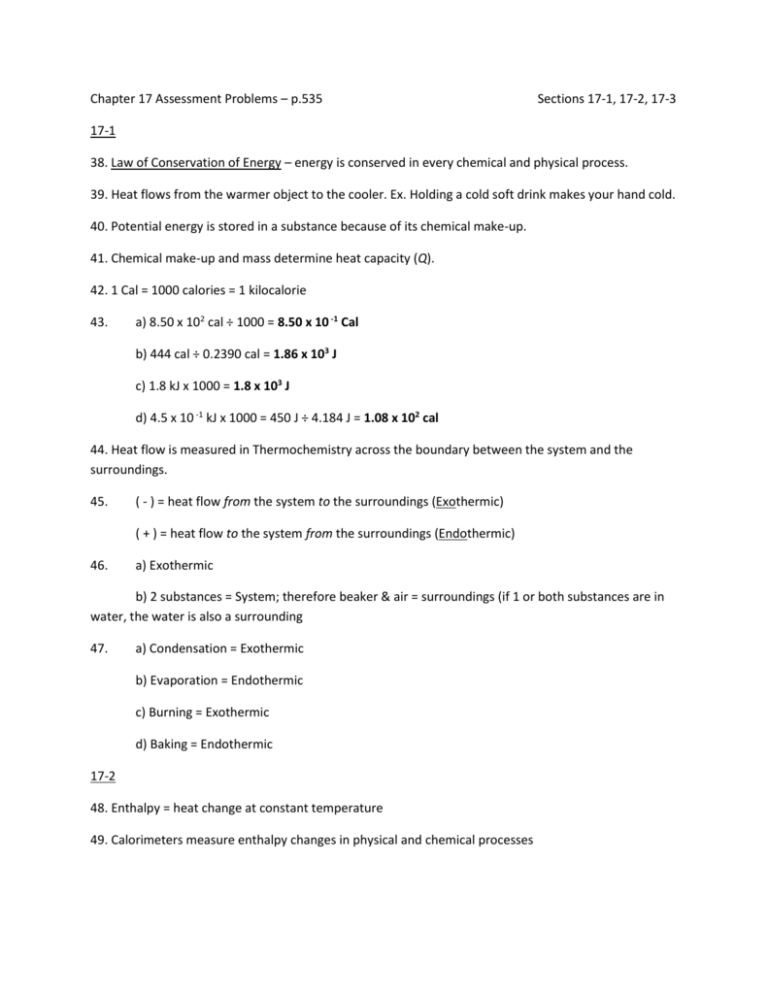
Chapter 17 Assessment Problems – p.535 Sections 17-1, 17-2, 17-3 17-1 38. Law of Conservation of Energy – energy is conserved in every chemical and physical process. 39. Heat flows from the warmer object to the cooler. Ex. Holding a cold soft drink makes your hand cold. 40. Potential energy is stored in a substance because of its chemical make-up. 41. Chemical make-up and mass determine heat capacity (Q). 42. 1 Cal = 1000 calories = 1 kilocalorie 43. a) 8.50 x 102 cal ÷ 1000 = 8.50 x 10 -1 Cal b) 444 cal ÷ 0.2390 cal = 1.86 x 103 J c) 1.8 kJ x 1000 = 1.8 x 103 J d) 4.5 x 10 -1 kJ x 1000 = 450 J ÷ 4.184 J = 1.08 x 102 cal 44. Heat flow is measured in Thermochemistry across the boundary between the system and the surroundings. 45. ( - ) = heat flow from the system to the surroundings (Exothermic) ( + ) = heat flow to the system from the surroundings (Endothermic) 46. a) Exothermic b) 2 substances = System; therefore beaker & air = surroundings (if 1 or both substances are in water, the water is also a surrounding 47. a) Condensation = Exothermic b) Evaporation = Endothermic c) Burning = Exothermic d) Baking = Endothermic 17-2 48. Enthalpy = heat change at constant temperature 49. Calorimeters measure enthalpy changes in physical and chemical processes 50. Three errors in Foam Cup Calorimeters are: - foam cup will absorb heat - some heat will be lost to the air - if reactants are not completely mixed, temperature measurements will be inaccurate 51. Bomb calorimeter = measures heat released at a constant temperature 52. Standard conditions for heat of combustion: 1 atmospheric pressure (101.3 kPa) & 25˚C. 53. Thermochemical equation = amount of heat released or absorbed in a chemical change at constant pressure
